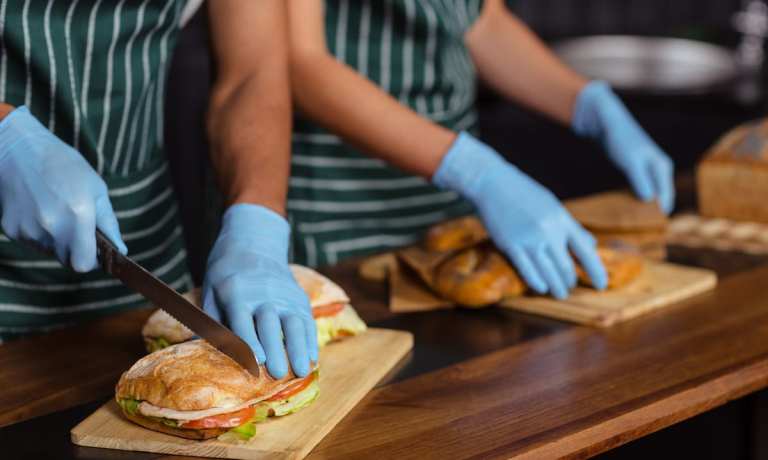
This winter put the restaurant industry to the test, with cold weather placing major constraints on outdoor dining opportunities, and with many restaurants adopting costly solutions to gain back just a portion of their summer customer base. However, it seems as though the industry may be beginning to come back.
The U.S. Bureau of Labor Statistics (BLS) found that the restaurant industry added 289,500 jobs during the month of February alone, reports Restaurant Business, a surprisingly high portion of the 379,000 total jobs added in that time. This marked the highest growth rate in the sector since the summer. Moreover, these gains occurred at a time when there was no significant change in the general unemployment rate.
Now, the BLS statistics indicate that number of “Food Services and Drinking Places” jobs remains 62,400 lower than in November levels, but it is 302,700 jobs higher than in December. Additionally, the sector’s unemployment rate has actually fallen since November, down to 12.2 percent from 13.8 percent.
“There’s still a long way to go,” ZipRecruiter economist Julia Pollak told The New York Times, speaking of the industry’s recovery, “but thank goodness it’s moving in the right direction and not continuing to hemorrhage jobs. The industry is a first rung on the ladder and employs so many young people.”
Steak ‘n Shake’s New Self-Service Model
As the restaurant industry on the whole adds jobs, many large restaurant chains are looking for automated solutions to reduce the amount of human labor required to operate. Casual restaurant chain Steak ‘n Shake, which has historically been primarily a table service restaurant, is shifting toward a quick-service model, reports Cleveland.com. Guests will use self-service kiosks to place and retrieve their orders.
“Although most of our dining rooms are currently closed, we are not dispensing with them altogether; rather, we intend to equip units with advanced self-service,” Sardar Biglari, chairman of the board of Steak ‘n Shake owner Biglari Holdings, wrote in a letter to shareholders on February 26. “What will be most evident to our returning patrons is that instead of ordering at the table, or even at a counter with an attendant, our guests will now initiate their transaction at a kiosk.”
Regarding the decision to axe the table service model, Biglari wrote, “The combination of labor-intensive, slow production and high-cost table service was a faulty business model. Simply put, the operation of dining rooms with table service was a money loser.”
In addition to these kiosks, the chain is also remodeling the restaurants’ interiors and implementing a new point-of-sale system, though Biglari did not offer specifics about either of these changes. The cost of these changes will be run between $100,000 and $200,000 per restaurant. The changes will begin with the chain’s top performing restaurants. According to Biglari, “These expenditures will be phased in by prioritizing units that possess exemplary leadership — namely, those owned and operated by franchise partners, who invariably provide the gold standard in service.”
Panda Express’s First Ghost Kitchen
Another restaurant testing out a potentially more operating margin-friendly model, fast casual Chinese food restaurant Panda Express just announced its first Panda Digital Kitchen, a ghost kitchen set to open in San Francisco later this month, reports Restaurant Dive.
The menu will be available both through Panda Delivers, the chain’s in-house delivery platform, and through third-party aggregators. The launch comes after a huge surge in delivery orders, more than triple the company’s pre-pandemic levels. According to QSR Magazine, the location will feature new kitchen equipment that will enable quicker food preparation.
With this addition, Panda Express joins the growing group of large restaurant chains supplementing their storefront restaurants with virtual kitchens. Hot dog quick-service restaurant (QSR) chain Nathan’s Famous, Inc. has added 100+ ghost kitchens since the summer, and in November, QSR giants Chipotle and Red Lobster both unveiled their own ghost kitchens, while McDonald’s and Starbucks have been piloting digital-only kitchens since pre-pandemic.
Texas Restaurant Association Sets Mask Policy
After Texas rolled back many of its COVID restrictions, businesses were left to figure out how to handle safety policies for consumers and employees. In the grocery industry, policies vary from store to store, with some chains mandating masks for all, while others let shoppers go mask-free. In the restaurant industry, the Texas Restaurant Association set its association-wide guidelines on Thursday (March 4), reports Nation’s Restaurant News, freeing members from the onus of determining their own COVID policies.
The policy “includes a face covering requirement for employees, and encourages guests to wear a face covering when they are not seated at their table,” according to the association’s statement. “The updated Texas Restaurant Promise also maintains key safety protocols like regular cleaning and disinfecting, hand sanitizing stations, and employee and customer health screenings.”
The policy went on to address the tension that can arise when consumers react negatively to anti-viral precautions, saying, “Unfortunately, we have seen far too many instances of these difficult interactions over the past year, which is why we continue to call upon every Texan to show respect and patience to any worker who is simply trying to do their job in spite of very challenging circumstances.”